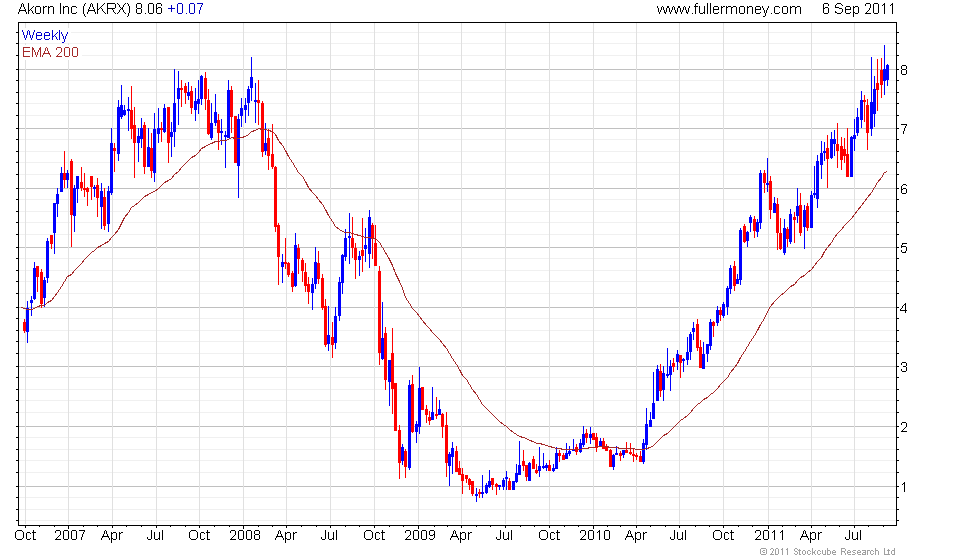The Stock Market Rally Overextended or Underappreciated
Post on: 21 Апрель, 2015 No Comment

Many analysts and financial pundits have been warning us about the unsustainability of the bull market in stocks, and their warnings have grown more dire as equities have soared ever higher.
Earlier this year, they advised us to “sell in May and go away.” In October, they told us that stocks were in a bubble. And earlier this month, before the Federal Reserve announced that it would taper its quantitative easing program, they urged us to get out before it was too late.
But does the observable evidence support that viewpoint?
A Bullish Breakout?
Let’s first examine the claim that stocks are in a bubble. It’s true that the major U.S. equity indexes are at all-time highs, and that the S&P 500 has added 100 points in just over two months.
But as you can see, this surge comes after a very long period of relative stagnation in the stock market. Investors who entered the market in 2007, or in 2000, would have seen no growth in their portfolios until the S&P 500 broke above the previous highs this past October.
If you told me that the stock market made no progress over a 13-year period, I’d argue that the current rally does not sound like a bubble. It sounds like a breakout.
Are Skeptical Investors Still Returning?
Another argument that stock market skeptics advance is that everyone who wants to be in equities is already in equities. But according to The Wall Street Journal. that’s not the case:
Despite growing signs that the economy is gaining steam and the relentless climb of stocks even after the Federal Reserve said last week it will shrink its monthly bond purchases, many investors still feel tepid about the overall stock market. Some analysts and money managers bet that further gains are ahead for the Dow and S&P 500 if individual investors continue returning to stocks, even slowly. With interest rates low, the economy expanding and the prices of many bonds and commodities having tumbled after a long rally, the case for stocks is stronger than for most alternatives, these bulls say.
What do the Technical Indicators Say?
Even after hearing these arguments, I would not blame conservative investors for their reluctance to stay in the market, or to jump in if they haven’t already. But even the most conservative investor must take notice of technical indicators any time they’re unanimous in support of a rally, like they are now.
If this so-called bubble were about to pop, we would certainly see large institutions shifting into more defensive sectors such as consumer staples. But as you can see from the chart below, that’s simply not happening.
In fact, the opposite is true: The Consumer Staples Select Sector SPDR (XLP) actually made a new low against the S&P 500 last week.

You might argue that truly conservative investors would prefer U.S. Treasuries to stocks, even defensive stocks such as consumer staples. But a comparison between stocks and bonds reveals the same pattern:
Demand for long-term U.S. Treasuries, as represented by the iShares Barclays 20+ Year Treasury Bond Fund (TLT), is lagging far behind demand for stocks.
These two charts are all the evidence I need to convince me that this bull market is in no danger of coming to an abrupt end anytime soon. And I’ll advise my clients and subscribers to remain invested in stocks until the evidence calls for a more defensive stance.
Happy New Year,
Douglas Davenport
Doug Davenport, who has 33 years of investment-management experience, is the editor of Weiss’ All-Weather Investor and Inflation Survival Strategy services.
Doug uses a technical-analytical strategy developed with Sir John Templeton, the late founder of the Templeton family of mutual funds, to manage clients’ money. He is president and chief investment officer of Davenport Investment Management LLC, an investment firm that manages portfolios for high-net-worth clients in Atlanta. The minimum investment is $100,000.
The investment strategy and opinions expressed in this article are those of the author and do not necessarily reflect those of any other editor at Weiss Research or the company as a whole.














